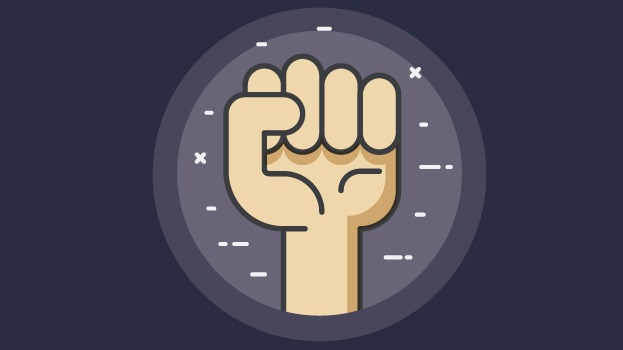Australia has some of the world’s most generous policies regarding employee entitlements.
While the length of annual leave might be shorter at a minimum of 20 days a year compared to other countries, the right to have unused days rolled over each year is a perk Australian workers have.
For the most part, the leaves are standard across Australia and are set out in the National Employment Standards (NES). However, some public holidays and types of leave vary between the states and territories, which can be confusing for workers.
National Public Holidays
As Australia is a federation, while we nationally share many holidays on the same day (particularly, religious, civic and cultural), states also have other public holidays, on top of that. You can check it out here.
In most cases, if an employee works on a public holiday, they are entitled to extra loading or penalty (additional payment). For further details, you should check your award entitlements. Holidays that land on an employee’s regular working day are in most cases entitled to payment. However, this does not apply to casual workers.
Note: Most public holidays that land on a weekend result in an ‘additional day’ on the next business day. However, sometimes they don’t and vary across the states and territories, be sure to check the government website for specific information.
Annual Leave
As a full-time or part-time employee you are entitled to a minimum of four weeks of annual leave a year. Specifically, you accumulate over a year, working on a full-time basis of 38 hours a week, 152 hours a year, equating to roughly 2.923 hours of annual leave a week. It is accumulated from day one of work and you are allowed to take it during probation periods if you need. There is no minimum amount of annual leave you must use and any leftover annual leave is rolled over to the next year.
Annual leave is also accrued during instances such as;
- Volunteer / Community service (including Jury duty)
- Other paid leave (annual leave, sick leave, carer’s leave)
- Long Service Leave
To apply for annual leave, companies have their own processes. However, typically you must submit a formal request in advance. Annual leave requests can be rejected by your employer, under reasonable grounds, whether it be because of the needs of the business or too short of notice. Short notice is a big factor in rejection, so be sure to submit your request as far in advance as possible.
With annual leave, different modern awards have varying rules regarding annual leave and whether you can be directed to take it, or if you can be paid out for it, instead. It’s best to check what stipulations your award has on the government website.
During annual leave, you will be paid your base rate income and for some awards and enterprise agreements, you may also be paid an extra 17.5% annual loading. When terminating your employment, your company must pay out any unused annual leave. The unused leave must also be treated as if the employee took it during their employment, therefore any loading or other entitlements must also be paid out.
Long Service Leave
Is for employees who have continuously worked for an extended time at the same company and is longer than typical annual leave. The eligibility varies from seven years (ACT, VIC) and ten years (NSW, NT, TAS, QLD, WA, SA) minimum working. However, for more tailored information regarding which industries are applicable, working types (casual, full-time, part-time) and other specificities for your relevant state, check out the government website.
Sick / Carer’s Leave
Australian full-time workers are entitled to ten days of sick or carer (sometimes called personal) leave a year. The personal leave is paid and any unused leave is rolled over to the next year. Part-time workers are also entitled to paid leave, however, theirs is calculated on a pro-rata basis. Casual workers are not entitled to paid personal leave.
When taking sick leave, you might be required to give evidence. However, it depends on your company’s policy. Some businesses may require a medical certificate for one day of leave or after two days, for instance. To find out what applies to you, you will need to check with your company or company’s HR officer.
Parental Leave Pay
The Australian government has a scheme that allows eligible employers to receive up to 18 weeks of paid parental leave at the national minimum wage. You must be the primary caregiver for a newborn or recently adopted child. The payment scheme is run by Services Australia.
From 1 July 2020, the scheme is made up of a set and flexible leave period.
For the first set period, you must take 12 weeks of continuous leave within the first 12 months of the birth or adoption of the child.
The second flexible period usually starts following the first set period. It gives the employee the ability to take up to 30 days of leave at a time within the first 24 months of birth or adoption. The flexibility period is to be negotiated between the employer and employee.
Dad & Partner Pay
Eligible fathers and partners (including same-sex) are entitled to two weeks of minimum wage pay following the birth or adoption of their child. There are certain conditions and eligibility criteria to fulfil, read more at Services Australia.
Unpaid Parental Leave
Full-time and part-time employees are entitled to 12 months of unpaid parental leave. This right is afforded to those taking time off to have, or adopt a child (aged under 16 years). However, to be entitled to this leave, you must have worked at your current employer for at least 12 months and be the primary caregiver.
Throughout your parental leave, you will not accrue annual leave. Although, you still may use your accumulated annual leave anytime during the period. You will need to follow the same protocols for requesting permission from your employer.
Parental leave can begin up to 6 weeks before your expected due date and if you require it earlier, that can be negotiated with your employer. If you experience complications during your pregnancy and are inside the 28 weeks leading up to your expected due date, you can access Special Maternity Leave.
Casual employees can also take unpaid maternity leave provided they have been working for the same employer for a minimum of 12 months and they would have continued to work had they not had a child.
Unpaid Parental Leave: Partners
Partners of the pregnant employee are allowed to take unpaid parental leave. They can take concurrent leave, wherein they and their spouse are on unpaid leave at the same time, for a maximum of eight weeks. The eight weeks do not have to be all together, they can be split across the first 12 months from birth or adoption. The timing must be arranged with your employer.
Bereavement (A.K.A. Compassionate) Leave
Is two days afforded to employees in the event of a serious injury or death of an immediate family member or household member. The leave is also granted to those that have a miscarriage or whose spouse has one. The two days can be taken continuously or separately. Full-time and part-time employees receive paid leave, whereas for casual workers it is unpaid. Reasonable requests for evidence can be made by the employer. Examples of evidence include a death or funeral notice.
Family & Domestic Violence Leave
Domestic violence is taken very seriously in Australia and its leave entitlements reflect that. Currently, employees (including part-time and casual) that experience threatening, violent or abusive behaviour by their close relative/s are entitled to five days of unpaid leave over a 12-month period (which will reset on their commencement date anniversary). The leave does not rollover year-on-year.
The leave may change soon under the proposed Fair Work Amendment (Paid Family and Domestic Violence Leave) Bill 2022 introduced to Parliament in July 2022. The bill will entitle employees to 10 days of paid Family and Domestic Leave in a 12-month period. The bill passed in October 2022 and is to come into effect from:
1 February 2023: Employees (other than small business employees) will have immediate access from their employment start date.
1 August 2023: Small business (less than 15 employees) employees will have access to the paid leave
Community Service Leave
Community service leave applies to volunteering with emergency management activities. The leave Is unpaid and afforded to all employees. There is no limit on how many days you can take. For volunteering, it must be with a recognised emergency management body. Some examples include: State Emergency Service (SES), Country Fire Authority and the Red Cross.
Knowing what you and your employees are entitled to, is essential when expanding overseas. Be sure to regularly review existing labour laws and keep an eye out for new ones that may be introduced.













 September 21, 2022
September 21, 2022 







